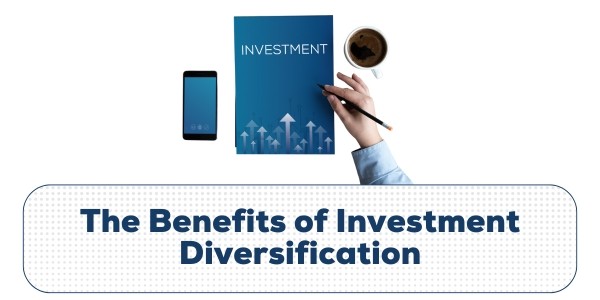The Benefits of Investment Diversification
When it comes to financial management, no single investment will continually outperform all other investments all of the time. To minimise
potential losses and to smooth your investment returns over the longer term, you should spread your portfolio across various investments.
But that can be easier said than done so there are different ways to diversify.
Diversify across asset classes
Asset classes are the broad categories of investments and include equities, fixed interest, property and cash investments. Equities include
both Australian and international shares. Fixed interest includes government, semi-government and corporate bonds. Property includes
residential, retail and commercial properties. Cash includes term deposits and at-call cash accounts.
Lower risk asset classes, including fixed interest and cash, protect your capital during adverse market conditions. On the other hand,
higher risk assets, such as Australian and international shares, can deliver good returns during the boom times. Holding a mix of asset
classes may help to provide more stable returns over the medium to longer term as markets rise and fall.
Diversify within asset classes
This could mean spreading your share portfolio across different industry sectors because certain sectors may outperform others over a given
period according to economic conditions.
Two good examples are mining and manufacturing. The Australian resources industry helped keep Australia’s economy a shining light against a
gloomy international backdrop following the Global Financial Crisis. Manufacturing, on the other hand, struggles with high labour costs
making Australia less competitive against low income countries such as China. Nobody knows what the future holds - both of these industries
are facing volatile conditions a few short years later - so a balance across industries is crucial.
It can be simple
Even with a relatively modest amount to invest and very little time, you can achieve a balanced portfolio with the right mix of investments.
Managed funds offer easy access to a wide range of investments. By investing in a managed fund, professional fund managers select individual investments for you. In addition, most managed funds offer several different options to cater for varied levels of investment risk.
Other options include purchasing shares in Listed Investment Companies (LICs) and Exchange Traded Funds (ETFs) on the stock exchange.
Depending on its charter, a LIC holds shares in a wide range of companies, while ETFs invest across all stocks making up a particular index,
such as the S&P/ASX 200. Buying shares in an ETF or LIC gives you exposure to all the stocks held by the fund.
If you're looking to make the most of your investments and minimise unnecessary risk, get in touch with our Financial Planning team on 1300
363 866. We can help tailor a diversification strategy to suit your goals and circumstances, and guide you through the advantages of
spreading your investments wisely. Get in touch today to discover how you can build a more resilient and rewarding portfolio for the
future.
Note: past performance is not an indicator of future results.
McConachie Stedman Financial Planning Pty Ltd is a Corporate Authorised Representative of MCS Financial Planning Pty Ltd | ABN 11 677 710
600 | AFSL 560040
General Advice Warning
The information provided in this article is for general information purposes only and is not intended to and does not constitute formal
taxation, financial or accounting advice. McConachie Stedman does not give any guarantee, warranty or make any representation that the
information is fit for a particular purpose. As such, you should not make any investment or other financial decision in reliance upon the
information set out in this correspondence and should seek professional advice on the financial, legal and taxation implications before
making any such decisions.

